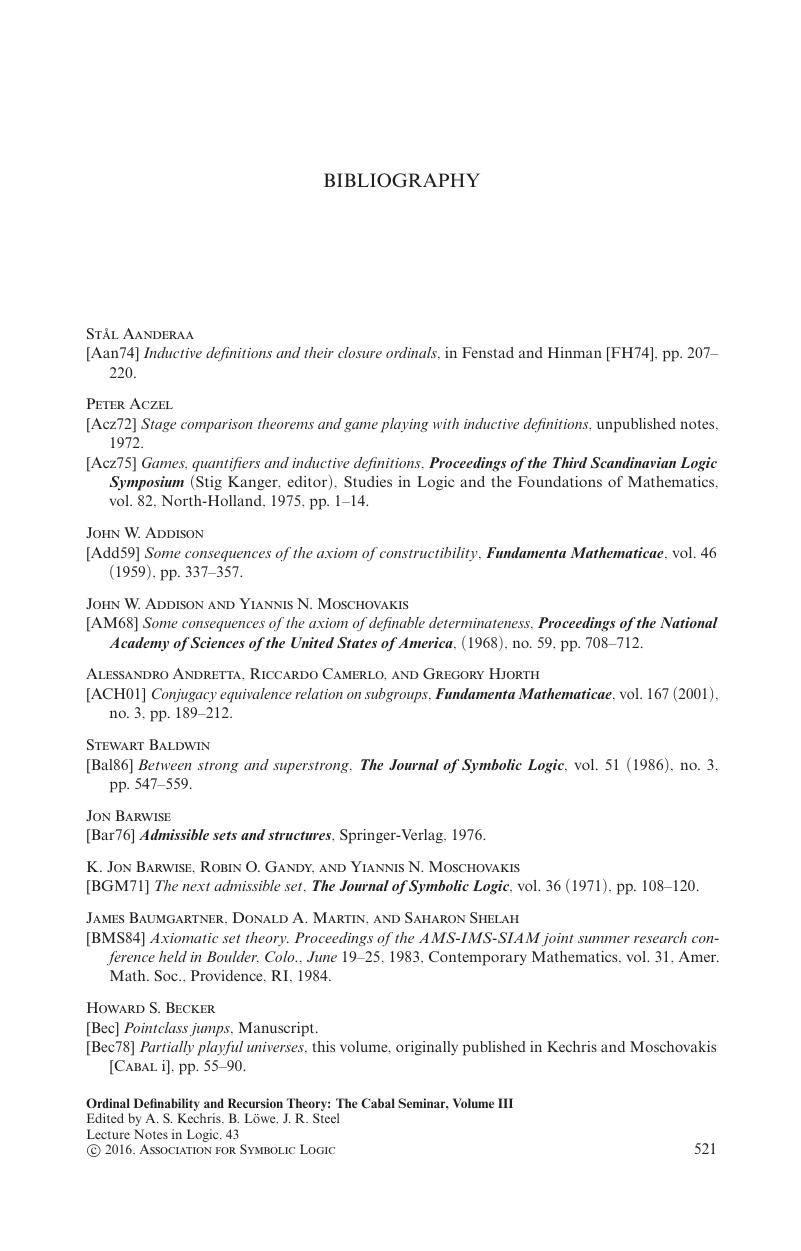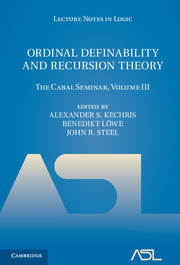Bibliography
Published online by Cambridge University Press: 05 December 2015
Summary

- Type
- Chapter
- Information
- Ordinal Definability and Recursion TheoryThe Cabal Seminar, Volume III, pp. 521 - 535Publisher: Cambridge University PressPrint publication year: 2016



